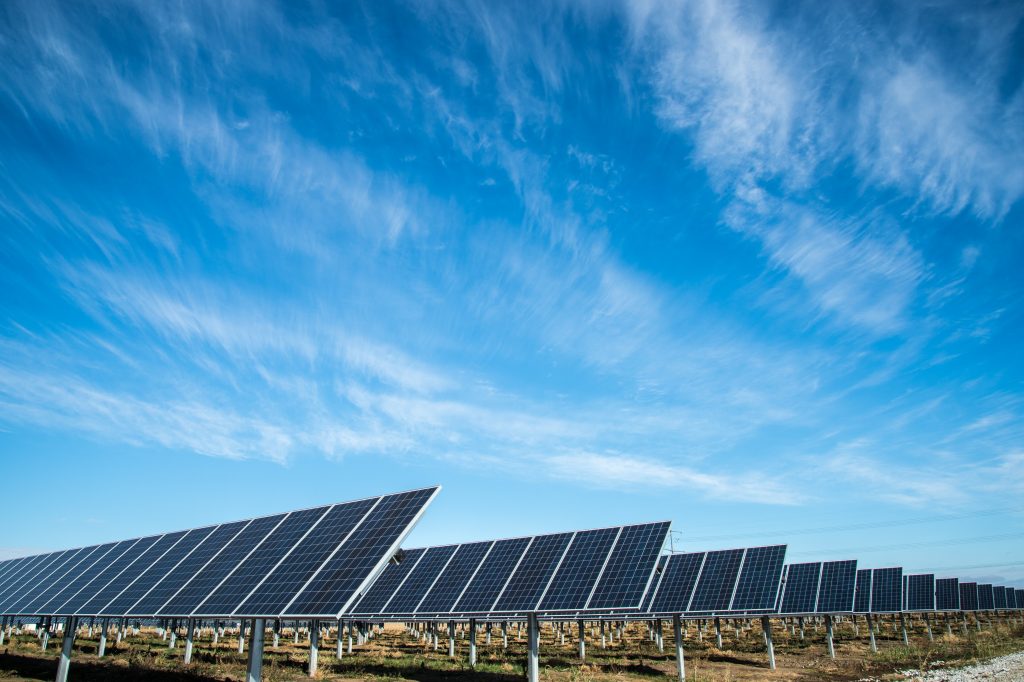Introduction to climate change technologies
The urgency to address climate change has never been more pronounced. As we face rising global temperatures, unpredictable weather patterns, and escalating environmental crises, the call to action is clear. A key player in this monumental effort is technology. Innovative solutions are being deployed worldwide to reduce our carbon footprint and mitigate the effects of climate change. Let’s explore some of these groundbreaking technologies.
Renewable Energy Sources
Solar Power
Solar panels have become synonymous with clean energy. The rapid advancements in photovoltaic technology have not only increased the efficiency of solar panels but also made them more affordable. Today, solar farms and rooftop panels are common sights, harnessing the sun’s energy to power our homes and cities.
Wind Power
The growth of wind energy, both onshore and offshore, is a testament to its potential to meet a significant portion of our energy needs. Large wind turbines dot landscapes and seascapes, converting wind energy into electricity without any harmful emissions.
Hydroelectric Power
Water is a powerful source of energy, and hydroelectric plants utilize this to generate electricity. While balancing energy needs with ecological impacts remains a challenge, hydroelectric power is a pivotal part of the renewable energy mix.
Geothermal Energy
Tapping into the Earth’s internal heat, geothermal energy provides a steady and reliable power source, especially in volcanic regions. This underutilized resource offers significant potential for sustainable energy.
Electric Vehicles (EVs)

Types of Electric Vehicles
-
Battery Electric Vehicles (BEVs): BEVs are powered entirely by electricity stored in rechargeable battery packs. They have electric motors and do not have a traditional internal combustion engine. Examples include cars like the Tesla Model S, Nissan Leaf, and Chevrolet Bolt.
-
Plug-in Hybrid Electric Vehicles (PHEVs): PHEVs have both an electric motor and an internal combustion engine. They can be plugged in to charge the battery for electric-only driving and use gasoline for longer trips. Examples include the Toyota Prius Prime and the Chevrolet Volt.
-
Hybrid Electric Vehicles (HEVs): HEVs, like the Toyota Prius, also have an electric motor and a gasoline engine. However, their batteries can’t be charged externally; they’re recharged by the engine and through regenerative braking.
-
Fuel Cell Electric Vehicles (FCEVs): FCEVs, such as the Toyota Mirai, use a hydrogen fuel cell to generate electricity on board. They emit only water vapor and warm air.
Carbon Capture and Storage (CCS)

Capturing CO2
There are several methods for capturing CO2, including post-combustion, pre-combustion, and oxy-fuel combustion technologies
- Post-combustion technology: This method separates CO2 from the flue gas using a chemical solvent after the fuel is burnt.
- Pre-combustion technology: This method involves capturing CO2 directly from the fuel before it is burned, reducing the amount of CO2 emitted during the combustion process.
Oxy-fuel combustion
This method involves burning fuel with pure oxygen instead of air, which results in more complete combustion and fewer emissions.
Transporting CO2
Once captured, the CO2 is compressed into a liquid state and transported to the storage site using pipelines, road transport, or ships.
Storing (or utilizing) CO2
The final step involves storing the captured CO2 deep underground in geological formations, where it will be trapped beneath impermeable layers of rock, preventing it from returning to the atmosphere. In some cases, the captured CO2 can be used for other purposes, such as enhancing oil recovery or providing a carbon source for various industries.
Natural Climate Solutions

- Reforestation and Afforestation: Planting trees in deforested areas and in regions where forests were absent plays a significant role in sequestering carbon. This not only helps in reducing atmospheric CO2 but also benefits biodiversity and soil health.
-
Sustainable Agriculture: Embracing sustainable farming practices reduces emissions from agriculture. Techniques like crop rotation, reduced use of chemical fertilizers, and managing livestock diets contribute to a more sustainable and environmentally friendly agricultural sector.
Smart Grids and Energy Storage

Smart grid
- Integration of Renewable Energy: Smart grids facilitate the integration of renewable energy sources like solar and wind, which are variable in nature. They help in efficiently managing the fluctuations and ensuring a stable energy supply.
- Real-Time Monitoring and Control: They use advanced metering infrastructure (AMI) to monitor real-time data from various points in the grid. This data is used to balance supply and demand, detect faults, and manage outages more effectively.
- Improved Energy Efficiency: By providing data on energy usage patterns, smart grids enable consumers and utilities to optimize energy use, thereby increasing overall efficiency.
- Demand Response Programs: Smart grids allow for demand response, where customers can adjust their energy usage during peak hours in response to real-time pricing or other incentives.
Energy storage
Energy storage is crucial for managing the intermittency of renewable energy sources. It ensures that excess energy generated during periods of high production (like a sunny or windy day) can be stored and used during times when production is low. Several types of energy storage include:
- Batteries: The most common form of energy storage, with lithium-ion batteries being widely used. They’re essential for both small-scale applications (like home solar systems) and large-scale applications (like grid storage).
- Pumped Hydro Storage: This is a form of large-scale energy storage, where water is pumped from a lower elevation reservoir to a higher elevation. Energy is stored in the form of gravitational potential energy and is released by flowing back down through turbines.
- Flywheels: These store energy in a spinning wheel and are known for their ability to deliver quick bursts of power, making them useful for stabilizing the grid.
- Compressed Air Energy Storage (CAES): Energy is stored by compressing air in underground caverns. The compressed air is released to drive turbines when needed.
Energy Efficiency
- Buildings: This includes both residential and commercial properties. Energy efficiency in buildings can be achieved through better insulation, energy-efficient windows, and using energy-saving heating, ventilation, and air conditioning (HVAC) systems.
- Appliances and Electronics: Energy-efficient appliances like refrigerators, washing machines, and LED lighting use less electricity than standard models. The Energy Star program in the U.S., for example, labels the most energy-efficient products on the market.
- Industrial Processes: Many industries can improve energy efficiency by upgrading equipment, optimizing processes, and recovering waste heat for use in other processes.
- Transportation: This includes designing more fuel-efficient vehicles, promoting electric and hybrid vehicles, and encouraging public transportation and other forms of sustainable mobility.
Sustainable Agriculture

Sustainable agriculture is a method of farming that aims to meet society’s present food and textile needs without compromising the ability of future generations to meet their own needs. It focuses on maintaining the health of the environment, economic profitability, and social and economic equity.
Principles of Sustainable Agriculture
- Environmental Health: This involves practices that do not harm the environment, improve soil fertility, and conserve water. It emphasizes the use of natural biological processes and cycles adapted to local conditions, rather than relying heavily on synthetic inputs like chemical fertilizers and pesticides.
- Economic Profitability: Farmers need to be able to make a living. Sustainable agriculture must be economically viable for farmers, ensuring they can maintain their land and resources for future generations.
- Social and Economic Equity: This principle is about fairness in the farming system. It includes protecting workers’ rights and ensuring that communities around farming areas benefit from agricultural activities.
Practices in Sustainable Agriculture
- Crop Rotation and Diversity: Rotating crops and growing a variety of crops helps maintain healthy soil, reduce soil erosion, and control pests and diseases naturally.
- Conservation Tillage: Reducing how often fields are tilled reduces soil erosion and improves soil health.
- Organic Farming: Avoiding synthetic pesticides and fertilizers. Using organic matter (like compost) helps keep soil healthy and reduces pollution.
- Integrated Pest Management (IPM): This involves using a variety of methods and techniques, including biological control, habitat manipulation, and use of resistant varieties.
- Agroforestry Practices: Incorporating trees into farm landscapes (agroforestry) can help mitigate climate change, improve biodiversity, and enhance the land’s resilience to environmental stressors.
- Water Management: Implementing efficient irrigation practices (like drip irrigation) conserves water and reduces runoff.
- Cover Cropping: Growing certain types of crops (cover crops) during the off-season helps prevent soil erosion, manage soil fertility, and control weeds and pests.
- Pasture and Grazing Management: Proper management of pastures can improve the health of livestock, reduce the need for chemical inputs, and increase carbon sequestration in soil.
Energy efficiency is a powerful tool in the fight against climate change, offering a win-win scenario of environmental benefits and cost savings. As technology advances and awareness grows, the potential for energy efficiency continues to expand, making it an essential component of sustainable development.
About GreenUP
Pioneering the Green Transition with Expertise and Innovation. With over 10 million I-RECs issued since 2019, we are Vietnam’s leaders in renewable energy certification. Our comprehensive suite of services, positions us uniquely as a one-stop solution for all your green and ESG needs. Experience unparalleled market access, competitive pricing, and strategic partnerships that drive not only cost savings but also significant value to your sustainability goals.
References
- International Energy Agency (IEA). (n.d.). Is carbon capture too expensive? Retrieved from https://www.iea.org/commentaries/is-carbon-capture-too-expensive
- Royal Society Publishing. (2019). Retrieved from https://royalsocietypublishing.org/doi/10.1098/rsfs.2019.0065
- International Institute for Sustainable Development (IISD). (n.d.). Why carbon capture storage cost remains high. Retrieved from https://www.iisd.org/articles/deep-dive/why-carbon-capture-storage-cost-remains-high
- World Resources Institute (WRI). (n.d.). 6 ways to remove carbon pollution from the sky. Retrieved from https://www.wri.org/insights/6-ways-remove-carbon-pollution-sky
- Storegga. (n.d.). Carbon capture methods compared. Retrieved from https://storegga.earth/blog/carbon-capture-methods-compared
- National Grid. (n.d.). Carbon capture technology and how it works. Retrieved from https://www.nationalgrid.com/stories/energy-explained/carbon-capture-technology-and-how-it-works
- Verde. (n.d.). Carbon capture and storage: Pros and cons. Retrieved from https://blog.verde.ag/en/carbon-capture-and-storage-pros-cons/
- U.S. Government Accountability Office (GAO). (2022). Retrieved from https://www.gao.gov/products/gao-22-105274
- Solartronisa. (n.d.). Challenges of CCS. Retrieved from https://www.solartronisa.com/clean-energy/carbon-capture/challenges-of-ccs
- Tilbury, J. (n.d.). Four challenges carbon capture storage must overcome. Retrieved from https://www.linkedin.com/pulse/four-challenges-carbon-capture-storage-must-overcome-james-tilbury
- Frontiers. (2014). Retrieved from https://www.frontiersin.org/articles/10.3389/fenrg.2014.00055
- AZoCleantech. (n.d.). Retrieved from https://www.azocleantech.com/article.aspx?ArticleID=1572
- Treehugger. (n.d.). Carbon capture and storage (CCS): Pros and cons. Retrieved from https://www.treehugger.com/carbon-capture-and-storage-ccs-pros-and-cons-5120005
- British Geological Survey. (n.d.). Carbon capture and storage. Retrieved from https://www.bgs.ac.uk/discovering-geology/climate-change/carbon-capture-and-storage/
- HowStuffWorks. (n.d.). How carbon capture works. Retrieved from https://science.howstuffworks.com/environmental/green-science/carbon-capture.htm
- London School of Economics and Political Science (LSE). (n.d.). What is carbon capture and storage and what role can it play in tackling climate change? Retrieved from https://www.lse.ac.uk/granthaminstitute/explainers/what-is-carbon-capture-and-storage-and-what-role-can-it-play-in-tackling-climate-change/
- SAP. (n.d.). By land, sea, and air: Emerging technologies to tackle climate change. Retrieved from https://www.sap.com/insights/viewpoints/by-land-sea-and-air-emerging-technologies-to-tackle-climate-change.html
- ZDNet. (n.d.). Fighting climate change: These 5 technologies are our best weapons. Retrieved from https://www.zdnet.com/home-and-office/sustainability/fighting-climate-change-these-5-technologies-are-our-best-weapons/
- United Nations Framework Convention on Climate Change (UNFCCC). (n.d.). [Title of the document]. Retrieved from https://unfccc.int/ttclear/misc_/StaticFiles/gnwoerk_static/NAD_EBG/54b3b39e25b84f96aeada52180215ade/b8ce50e79b574690886602169f4f479b.pdf
- Sky News. (n.d.). Climate change: Seven technology solutions that could help solve the crisis. Retrieved from https://news.sky.com/story/climate-change-seven-technology-solutions-that-could-help-solve-crisis-12056397
- Stantec. (n.d.). Climate change design & technology. Retrieved from https://www.stantec.com/en/services/sustainability/climate-change-design-technology







